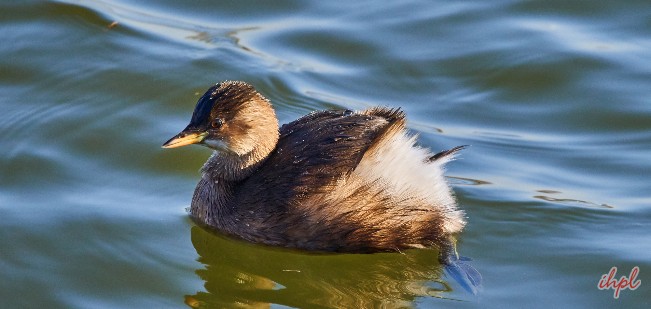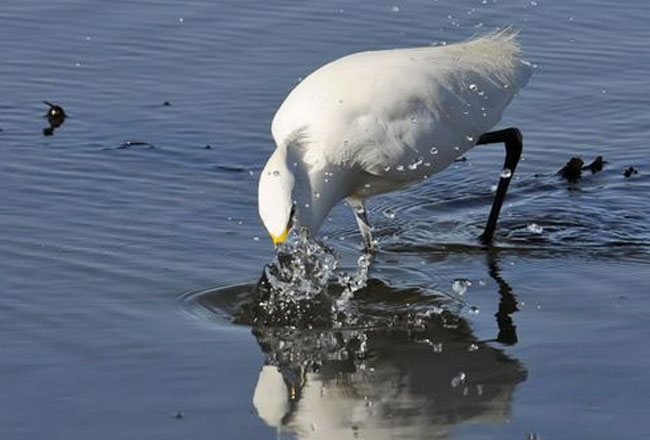Point Calimere Birds Sanctuary
Point Calimere Wildlife and Bird Sanctuary (PCWBS) is a 21.47-square-kilometre (8.29 sq mi) protected area in Tamil Nadu, South India along the Palk Strait where it meets the Bay of Bengal at Point Calimere (Tamil: கோடியக்கரை Kodiakkarai) at the southeastern tip of Nagapattinam District. The sanctuary was created in 1967 for conservation of the near threatened blackbuck antelope, an endemic mammal species of India. It is famous for large congregations of waterbirds, especially greater flamingos.[1] International name: Point Calimere Wildlife Sanctuary, IBA Code: IN275, Criteria: A1, The 7-square-kilometre (2.7 sq mi) core area of this sanctuary has been proposed as a National Park


Fauna
This sanctuary is an area of high biodiversity, with many unique species of animals and birds. See photos
Land animals
PCWBS is inhabited by fourteen mammal species, eighteen reptile species and nine amphibian species.
Blackbuck antelope, PCWBS's flagship species
The flagship species of the sanctuary is the near threatened blackbuck antelope, one of the four antelope species in India (Chinkara, Chausingha and Nilgai being the other three) and the most numerous large animal in the sanctuary. The population estimate of the blackbuck at Point Calimere more than doubled in thirty years, from 750–800 in 1967 to 1,908 in 1998/99. This isolated population of blackbuck probably survived unmolested throughout the centuries due to the locals' now declining belief that eating its meat causes leprosy. The predators of the blackbuck at Point Calimere are jackals, and sometimes village dogs. Competition for food is from domestic and feral cattle.
Other notable animals include: spotted deer, jackal, bonnet monkey, wild boar, monitor lizard, short-nosed fruit bat, small Indian civet, star tortoise, Indian grey mongoose, black-naped hare, jungle cat and feral pony.
Marine animals
Bottlenose dolphin is frequently seen along the shore of the sanctuary in morning and evening hours during the winter. The shoreline beaches of the sanctuary are a regular nesting site of the endangered olive ridley turtle. In 2002 a pair of Bryde's whale were found washed ashore near the sanctuary. One 10 ton 35-foot whale was successfully towed back to sea.
Flight of painted stork at PCWBS
List of birds at PCWBS
This was the first successful rescue of a beached whale in Asia.
Waterbirds
This site has recorded the second largest congregation of migratory waterbirds in India, with a peak population in excess of 100,000, representing 103 species. Bombay Natural History Society researchers have captured, studied, ringed and released over 200,000 birds during the course of several ornithological studies here in the past several years.
In October these waterbirds arrive from Rann of Kutch, Eastern Siberia, Northern Russia, Central Asia and parts of Europe for their feeding season and start returning to those breeding places in January. These waterbirds include threatened species such as spot-billed pelican, Nordmann's greenshank, spoonbill sandpiper and black-necked stork. Near threatened species include black-headed ibis, Asian dowitcher, lesser flamingo, spoonbill, darter and painted stork.
Landbirds
Brahminy kites and slender billed gulls at PCWBS
Over 15 square kilometres (5.8 sq mi) of the best tropical dry evergreen forest in India
are in the sanctuary. They harbour a large variety of resident and migratory landbirds. The most common of the 35 resident species are white-browed bulbul, brahminy kite, small green-billed malkoha, crow pheasant, rose-ringed parakeet, grey partridge, blue-tailed bee-eater and common iora.
Spotted and collared doves are common in the mangroves.


Flora
Mangrove forest at Muthupet
This site is a mix of salt swamps, mangroves, backwaters, mudflats, grasslands and tropical dry evergreen forests. 364 of flowering plant species have been identified in the sanctuary of which 50% are herbs and the others are climbers, shrubs and trees.
About 198 of these have medicinal properties. Manilkara hexandra, locally called Palai is the dominant dry evergreen species and an important food source for fruit eating birds. Middle canopy is dominated by the invasive Prosopis juliflora and the most abundant undergrowth is Memecylon umbellatum.





No comments:
Post a Comment